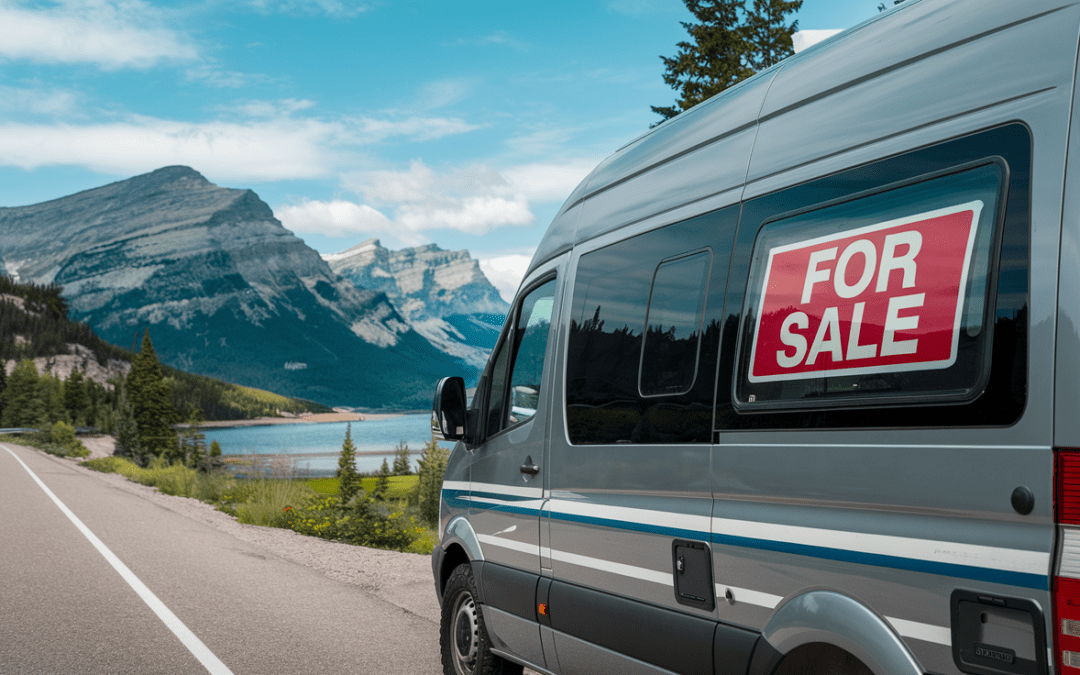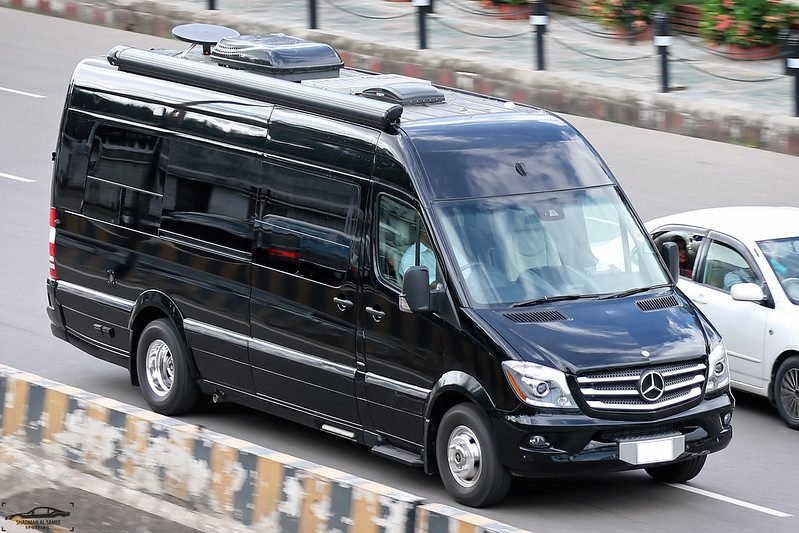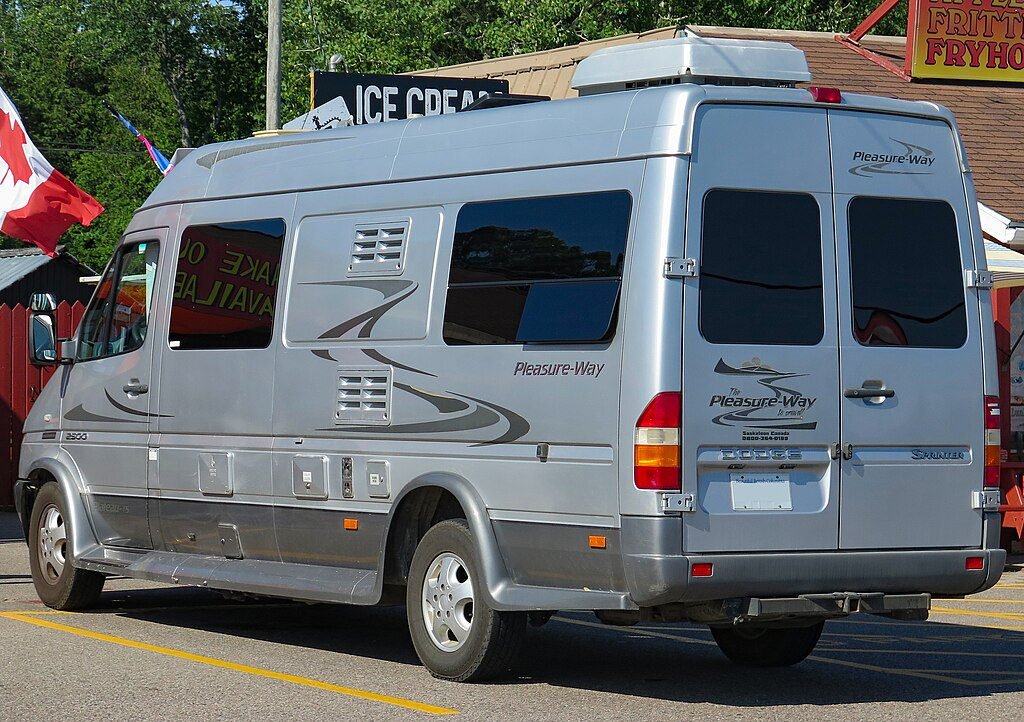Avoid Costly Mistakes and Score a Great Deal
I’ve been camping for decades now, and let me tell you – the market for “camper vans” has gone wild since 2020. If you’re thinking about jumping in but don’t want to drop $150K+ on a new rig, buying used is definitely the way to go. After helping dozens of friends find their perfect road companions, I’ve put together this no-nonsense guide to navigating the used Class B market in 2025.
Last updated: March 2025

What Makes Class B RVs Different (And Why They’re Worth It)
Let’s get something straight – Class B RVs are expensive for what you get, space-wise. You’re essentially paying a premium for clever engineering in a compact package. Built on van chassis like the
Mercedes Sprinter,
RAM ProMaster, or
Ford Transit,
they’re the smallest motorhome category but pack a shocking amount of functionality into limited space.
After combing thru the Class B listings on RVTrader, I can tell you the 2025 used market is WAY different than just 3-4 years ago. Many units hitting the secondary market now have lithium batteries, solar setups, and four-season insulation that would’ve cost thousands in aftermarket upgrades back in 2021.
Why am I personally impressed with Class Bs? I can actually park one at normal grocery stores without taking up 6 spots. They get decent fuel economy (around 16-18 mpg in a ProMaster-based Winnebago Travato), and they work well as both a weekend adventure rig and occasional daily driver. Try doing that with a massive Class A!
What’s Changed in the Class B World
The biggest shift I’ve noticed is energy independence. Many of the older Class B’s came with lead-acid batteries that died if you looked at them wrong. Now even basic models from 2022 forward have decent lithium setups that’ll actually run your AC for a few hours without a generator! That’s a game-changer for stealth camping.
(Learn more about lithium RV battery basics here).
Connectivity for remote work has become standard too. I’ve seen 2022-2023 models with built-in cellular boosters, dedicated workstations, and robust enough power systems to run laptops and monitors all day. This wasn’t happening 5 years ago. If you’re setting up an RV workspace, resources like the Mobile Internet Resource Center are gold for choosing the best setup.The extended wheelbase variants that used to be unicorns? They’re everywhere now. After manufacturers ramped up production in 2021-2022, you’re seeing way more of those 22-24 foot extended models hitting the used market. More space without stepping up to a Class C is pretty sweet.
Mercedes-Benz Sprinter RV via flickr
Inspection Landmines: Don’t Get Burned
Class Bs have their own special issues beyond normal RV concerns, and the integrated design means problems tend to cascade.
Start with the vehicle itself. I won’t buy anything without maintenance records – especially Sprinters with their complex emissions systems. One missed DEF fluid change can lead to a $4,000 repair bill. Check service intervals for the specific chassis and make sure they’ve been followed religiously.
(See Consumer Reports RV safety guide for Tips on Safer RV Travel).
Water damage is still the #1 killer, even in these smaller units. I always carry a cheap moisture meter (like $25 on Amazon) when looking at used vans. Press it against the walls and ceiling, especially near windows, roof vents, and air conditioners. Had a seller get really upset when I found softness around their fan vent that my meter confirmed was soaking wet inside the wall. Saved myself thousands walking away from that one!
(Find certified RV inspectors through NRVIA here).
The Electrical System Is Everything
Here’s something weird about Class Bs – the electrical system is way more complex than in bigger RVs because they’re cramming so much into a tiny space. I’ve seen some truly creative (read: terrifying) DIY electrical work in otherwise gorgeous vans.
Lithium batteries are amazing until they’re not. If you’re looking at a 2020+ model with lithium, make sure it has a proper battery management system (BMS) and ask about the charge cycles. Most lithium setups should last 2000-3000 cycles, but improper charging can kill them much faster. I watched a guy at a campground last summer cook his $6K lithium setup by connecting to faulty shore power without a surge protector.
(Learn more about proper lithium battery management).
Solar is a whole other can of worms. Ask how many watts are actually installed (not just what the controller can handle), and verify the panels are securely mounted. I’ve seen too many rigs with panels that were basically hanging on by a prayer after a couple of years of highway wind vibration.
Test Everything – Twice
- Convertible beds: The bed in my first van got stuck halfway converted on day three of ownership. Try every position at least twice.
- Refrigeration: Run it on propane AND electric. Many units cool fine on 120V shore power but struggle on propane or 12V.
- Water systems: Fill the freshwater tank and run the pump. It should be relatively quiet and maintain consistent pressure. If it rapidly cycles on/off when not in use, there’s a leak somewhere.
- Climate control: Run the furnace AND the AC. The furnace should ignite without multiple tries. The AC should cool noticeably within 5-10 minutes.
- Awnings and steps: Deploy them fully several times. These mechanisms fail regularly and are surprisingly expensive to fix.
One more thing: if the seller won’t let you spend at least an hour going through everything, walk away immediately. I don’t care how “hot” the market is – that’s a massive red flag.
Elise240SX, CC BY-SA 4.0, via Wikimedia Commons
Age vs. Mileage: What Actually Matters
I’ve talked to plenty of experienced RV owners, and here’s something they all seem to agree on: higher mileage can be better than lower age almost every time. One friend’s rig had 87,000 miles when they bought it (pretty high for a 4-year-old RV), but the previous owner used it constantly rather than letting it sit. Result? Every system worked flawlessly because nothing had time to dry out, gum up, or crack from disuse.
Think about it – RV systems are designed to be used. Seals in plumbing and slide mechanisms need regular operation to stay lubricated. Engines benefit from regular running to prevent gaskets from drying out. A Class B that’s been driven 15K miles annually is often in better shape than one that’s been used twice a year for weekend trips.
Of course, chassis differences matter. I’d be comfortable with a well-maintained Sprinter showing 150K+ miles, knowing it’s probably got another 150K easy in its future. A ProMaster with that mileage? I’d be more cautious, though they’re proving more durable than early skeptics predicted.
The Sweet Spot for Value in 2025
After obsessively tracking pricing for years, I’m convinced the absolute sweet spot right now is in 3-5 year old vans (2020-2022 model years). Why? They’ve already taken the steepest depreciation hit but are new enough to have the lithium batteries, solar, and modern amenities that make van life comfortable.
Many 2019-2021 models still have some factory warranty coverage on components, especially if you find one that wasn’t purchased until 2022 (very common with the production backlogs during those years). The chassis warranty is almost certainly expired by mileage, but the coach systems might still be covered.
(Check current RV listings on RVTrader).
Specific example: I recently looked at a 2021 Winnebago Travato 59GL with 29,000 miles priced at $112,000. In comparison, the same dealership had a new 2024 model listed for $168,000. This represents a potential savings of $56,000 for a used model with some mileage, although it may not have all the latest features and updates included in the newer model. While finding such deals can be challenging, they can offer significant value for those willing to consider a pre-owned vehicle.

Where I Actually Find the Good Deals
Forget the dealerships for a minute. Yes, they offer warranties and financing, but their 15-25% markup is brutal in this market. I’ve bought all my RVs private party, and while it requires more diligence, the savings can be enormous.
The absolute best place to find deals? Owner forums and Facebook groups specific to the model you want. I’m active in several Hymer / Roadtrek groups, and units often get posted there before hitting the public market. Owners selling to other enthusiasts tend to price more fairly and have usually taken better care of their rigs.
RVTrader and Facebook Marketplace are hit or miss. I’ve found gems and absolute disasters on both. The key difference is filtering – RVTrader lets you drill down to exact specs, while FB requires endless scrolling. One weird tip: search marketplace within 300-500 miles of major retirement communities. I’ve found amazing one-owner, low-mile units from seniors who decided the lifestyle wasn’t for them.
Timing Is Everything
I bought my current van on Facebook in the middle of winter. The price? About 22% below comparable units sold the previous summer. Winter purchases in cold-weather states can save you thousands as sellers face storage costs and low seasonal demand.
Conversely, NEVER shop for an RV in April or May unless you enjoy paying maximum price. Everyone starts thinking about summer trips, and the market goes nuts. September and October can also offer good values as summer users decide to sell rather than store for winter. Location hacking works too. My buddy flew one-way to Phoenix, bought a Class B for $12K under market value (compared to Seattle prices), and drove it home. The adventure was part of the fun, and even including the flight and gas, he saved about $10K. Desert states like Arizona and New Mexico not only have good inventory but also vans with minimal rust issues.
(Check RV inventory in desert states on RVT.com).
RV Show Secret:
Here’s a little-known trick: Show up on the LAST day of a major RV show, about 2 hours before closing. Dealers hate shipping unsold inventory back to their lots, especially trades they took in during the show. I’ve seen them knock 5-8% off already reasonable prices just to avoid the transport hassle. This only works with smaller dealers, though – the big chains usually have efficient logistics for moving inventory between locations.
Negotiation Tactics That Actually Work in 2025
Forget NADA values – they’re consistently wrong for Class B RVs, especially in this weird post-pandemic market. Instead, I build my own pricing database by saving completed sales from eBay, Facebook Marketplace, and other sources. Knowledge is power, and showing a seller concrete examples of recent comparable sales is way more effective than quoting some generic guide.
When I find issues during inspection, I don’t just say “this is broken, lower the price.” I research the exact replacement part cost and labor time, then present it as “This water heater needs replacement which costs $897 plus about 3 hours of labor at $150/hr. I’d like to adjust our price by $1,350 to account for this.” Specific numbers are harder to argue with than vague complaints.
One tactic that’s worked surprisingly well: offer slightly ABOVE asking price with contingencies. Last year, I helped a friend offer $2K over asking on a Pleasure-Way that had multiple interested buyers, with the contingency that it pass a professional inspection at a shop of our choosing. We got the deal, the inspection found $4,800 in needed repairs, and the seller adjusted the price accordingly. We still got it below market value AND had documented issues addressed.
The Money Stuff Nobody Talks About
Getting financing for used RVs is much harder than for new ones. Credit unions consistently beat banks for RV loans, often by 1-3% on interest rates. I had a friend finance through Alliant Credit Union for her last purchase – 5.9% when dealers were quoting 8-9%.Insurance is a whole other nightmare. Regular auto policies DON’T properly cover most Class B components. I learned this the hard way when another friend’s auto policy refused to cover water damage to his van’s interior systems. You need actual RV insurance, preferably from a company that understands these hybrid vehicle/homes.
(Check RV-specific insurance options at Good Sam).
Here’s a controversial opinion: I think most extended warranties are garbage, EXCEPT for the canceled manufacturer warranty transfers some companies offer. I read in one forum about a Winnebago warranty transferred to a second owner for $500, covering major components for 24 months. That’s a no-brainer. The third-party warranties that cost $3-5K? Read the exclusions carefully – they’re usually designed never to pay out.
Final Thoughts
Look, buying a used Class B is stressful. You’re dropping house-down-payment money on a complex machine that combines automotive and RV systems in the tightest possible package. Things will go wrong – that’s just RV life. But buying smart can minimize those headaches.
After helping over a dozen friends find their perfect van and learning about plenty of costly mistakes with my own purchases, my best advice is simple: buy the van that matches how you’ll ACTUALLY use it, not your fantasy usage. That 4×4 Revel looks awesome on Instagram climbing desert trails, but if you’re mainly visiting family and staying in campgrounds with hookups, you’re paying a massive premium for capabilities you’ll rarely use.
The Class B community is incredibly supportive. Before you buy, join the Facebook group or forum for the specific model you’re considering. Ask questions, learn the common issues, and maybe even find someone local who’ll let you see their rig in person. I’ve had complete strangers spend hours showing me their setups just because they love sharing the lifestyle.
(Search relevant Facebook Groups and Marketplace listings here).
Questions about specific models or situations? Drop them in the comments below. I check in weekly and try to respond to everyone, especially van-shopping newbies. And if you found this guide helpful, consider sharing it with other aspiring van-lifers. The more informed buyers we have, the better the whole market becomes!




